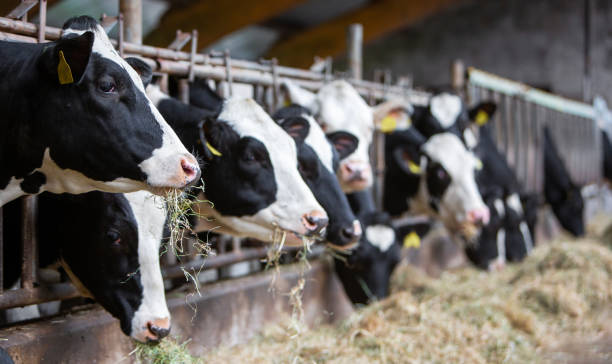March USDA monthly data showed the number of dairy cull cows marketed through U.S. slaughter plants in March 2025 was estimated at 217,900. While up 900 from February, it was 26,700 fewer than March 2024 and the lowest March total since 2008.
March 2024 had 26 non-holiday weekdays and Saturdays while March 2025 also had 26 days. Slaughter averaged 8,400 head per business day this year, 1,000 lower from a year earlier.
Weekly slaughter in 2025 continues to follow long-term trends. Through the week ending April 12, weekly dairy cow slaughter has trailed year-earlier levels in 14 of 15 weeks. Since September 2023 and through the week ending April 12, weekly dairy cow slaughter has now trailed year-earlier levels for 82 of 84 weeks, with a total decline of nearly 520,00 head over that period.
The USDA estimated there were 9.404 million dairy cows in U.S. herds in March 2025, up 57,000 head from the February estimate and putting the March culling rate at about 2.3% of the herd. Based on the monthly data, year-to-date (January-March) dairy cull cow slaughter now stands at about 682,700 head, down 64,800 from the same period a year ago and the lowest three-month total to start the year since 2008.
Heaviest dairy cow culling during March occurred in the Upper Midwest (Illinois, Indiana, Michigan, Minnesota, Ohio and Wisconsin) at 55,200 head. That was followed in the Southwest (Arizona, California, Hawaii and Nevada) at 45,700 head.
Other monthly regional totals were estimated at 33,200 head in Delaware, Maryland, Pennsylvania, West Virginia and Virginia; 30,000 head in Alaska, Idaho, Oregon and Washington; and 28,700 head in Arkansas, Louisiana, New Mexico, Oklahoma and Texas.
Primary data for the USDA’s Livestock Slaughter report is obtained from reports from about 900 federally inspected plants and nearly 1,850 state-inspected or custom-exempt slaughter plants.
-
Articles on The Cattle Range are published because of interesting content but don't necessarily reflect the views of The Cattle Range.













